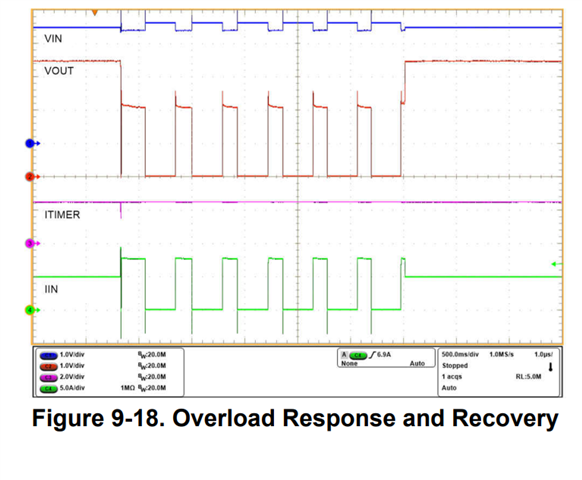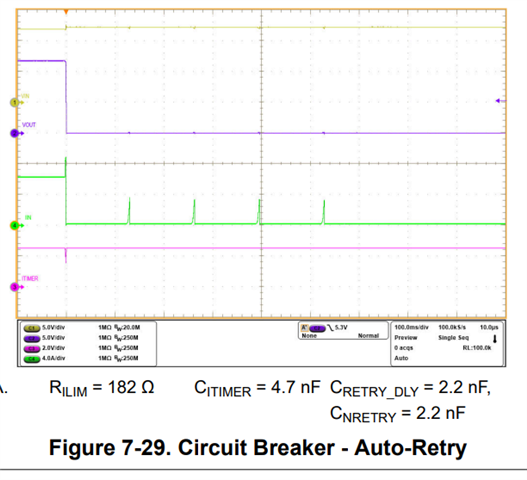Tool/software:
Regarding the TPS25980:
I am observing behavior not described in the datasheet for soft-short conditions near the current limit.
With the evaluation board TPS25980EVM in default configuration (4.5A current limit) (no modifications to the board, all jumpers in default position):
For 0.4–0.7Ω soft-shorts, TPS25980 either performs persistent current limiting or undergoes a single circuit-break operation. After the first retry attempt, the device enters persistent current limiting and does not attempt any further retries.
I also see this behavior on other custom boards and different current limits.
I expected the TPS25980 to perform this response from the datasheet: "Auto-retry 4 times with minimum delay between retries and then latch-off".
I did not expect it to enter persistent current limiting operation, and this is not desired for our application.
Is this behavior described in the datasheet? Or is it an issue with the part?
See attached slide:



